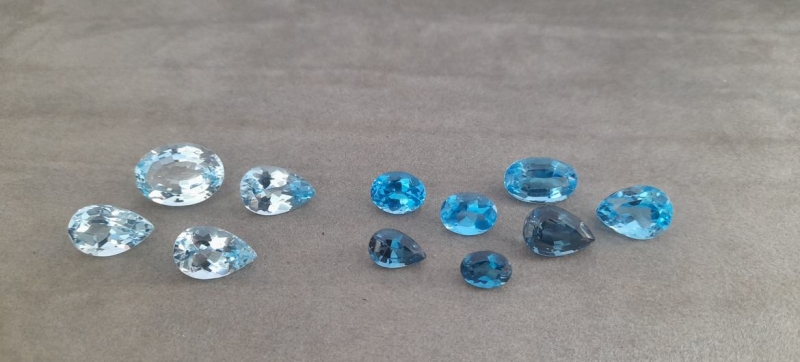
Irradiation can deepen the colour of some gemstones, increasing their commercial value. How and why the IAEA helps irradiate gemstones Economic Development
Irradiation of gemstones in research reactors is a common practice aimed at enhancing the stones’ color intensity and market value. The International Atomic Energy Agency (IAEA) works with national regulators to ensure the safety of workers and consumers in this area.
Why Gemstones Are Irradiated?
By carefully exposing crystals to strictly controlled doses of radiation, jewelers can cause changes in their molecular structure that give the stones deeper colors. This happens when the radiation dislodges electrons in the gemstone, changing its ability to absorb light.
This can produce diamonds, sapphires, and topazes, as well as other gemstones, in rich hues of blue, green, pink, and other colors that are often significantly brighter than those of naturally occurring stones.
Immediately after irradiation, these stones may contain activated residual radioactive material that is high enough to pose a safety hazard to industry workers and consumers and must be strictly controlled. It is important to establish effective regulatory oversight to ensure radiation protection for those involved in the production and trade of these gemstones.
“To reduce the level of radioactivity, irradiated gemstones must be isolated for a period of time before they can be processed further or sold to consumers,” explains Miroslav Pinak, Head of the IAEA Radiation Safety and Monitoring Section. “The IAEA publishes safety standards that countries follow when issuing permits for the production and sale of irradiated gemstones and other consumer products containing radioactive material, as well as when developing regulatory and supporting documents in this area.”
Radiation Safety of Consumer Products
Gemstones can be irradiated at various stages of processing, either before or after the stone is cut and polished, when it is ready to be mounted in a jewellery item such as a necklace. Gemstones are typically irradiated by wholesalers to enhance the colour of the stone. The stones are then stored in an irradiation facility for a period of time, in accordance with the IAEA International Basic Safety Standards or recommendations of national regulatory authorities, until the radioactivity levels naturally decrease to safe levels.
In the absence of adequate regulatory oversight, irradiated gemstones can result in relatively high radiation doses, primarily to the skin, which can cause burns. Regulatory oversight is therefore vital in ensuring that established procedures and guidelines are followed regarding the irradiation of gemstones during their manufacture and preparation for sale.
In the case of irradiated gemstone production and trade at the national level, the IAEA recommends the application of the IAEA safety standards, which describe how effective quality assurance and quality verification procedures should be developed and applied at the irradiation facility. The aim is to prevent human contact with gemstones immediately after irradiation, when the specific activity exceeds regulatory limits, to allow them to decay naturally, and to be able to trace specific lots of stones. This can be achieved by using techniques such as lot labelling, estimating the specific activity of specific radionuclides, calculating decay times and fission product leakage, and arranging for safe storage and defining leakage criteria.
“Ensuring the safety of consumer products that emit radiation during their creation or operation is a regulatory requirement. As a regulator, we need to be one step ahead of the industry, anticipate problems and create reliable mechanisms that can not only respond to current risks, but also prevent the emergence of new ones,” said Igor Gusev, a senior expert at the Saudi Arabian Nuclear and Radiological Regulatory Commission. — Our goal is not just to ensure radiation safety, but to identify and implement good practices to make the use of these technologies as safe as possible.”
The IAEA’s Radiation Safety Guidelines for Consumer Products, prepared jointly with the Nuclear Energy Agency of the Organisation for Economic Co-operation and Development (OECD), help countries ensure that the production and sale of precious stones and other consumer products that contain radioactive material, such as ionisation smoke detectors, tungsten welding electrodes and high-pressure discharge lamps, is carried out in accordance with the IAEA’s General Safety Requirements. This will enable countries to maintain adequate controls, prevent the sale of consumer products that are not manufactured correctly, while allowing the sale of products that are manufactured correctly.
